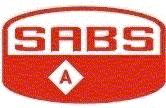Concrete Materials In order to make good quality concrete, you need to fully understand its different constituents and the roles they play. So, let's look at concrete's ingredients more closely. The "heart" of concrete is the cement - the substance that, with water, does the chemical work, and binds the sand and stones into an astonishingly strong, composite material. Cement (and "cement-like substances") Cementitious materials for concrete are fine mineral powders. The particular type of cement used in concrete, and nearly all building work, is called "hydraulic cement" because water is required for the chemical reactions that lead to hardening (a chemical reaction called hydration takes place). As a result, the cement-water paste gradually changes from a plastic state to form a strong rigid mass that binds the aggregate (sand and stone) together. The word "cement" refers, in its widest sense, to anything that holds materials together. Glues are "cements". There are several types of hydraulic cement, but the most important and commonly-used is "Portland cement", so-called because its colour, when set, resembles that of a type of stone found on the Isle of Portland, in the English Channel. Portland cement is made by crushing, heating, and crushing again a mixture of rocks and soil-like substances, the main ones being types of limestone, chalk and clay. These are complex substances, in the sense that they contain several chemical elements in various combinations. The most important actual chemicals are calcium, silica, aluminium, iron and oxygen. The purpose of the first crushing and grinding is to bring the chemicals into sufficiently close proximity to enable them to react with each other. Heating, to about 1 500 degrees C, provides the necessary energy for these reactions to occur, and new compounds are formed. The final grinding again produces an extremely fine powder and close proximity of potentially reactive substances. When water is added, new compounds are formed, some contraction in volume occurs, heat is given off, and the individual cement particles fuse into a continuous "matrix" which locks the sand and stone components into a hard, rigid mass. Although modern cements are made in factories under carefully controlled conditions, there are also so-called "natural cements" in many areas of the world. It was these "natural cements" that our forebears used in Rome, Greece and elsewhere. The most common are mixtures of limestone and clays. They are prepared by burning and then crushing into powdered form. The rate of strength gain and heat developed by the reaction between water and cementitious materials is governed by the fineness of the cement particles, and their constituents. The letter "N" in a cement strength class designation indicates normal rate of strength gain, and "R" indicates rapid strength gain, particularly at early ages. We use the word "cement" to cover all branded cements, bearing the SABS mark, that comply with SABS EN 197-1 /SANS 50197-1 strength class 32,5N and are commonly available from hardware stores and builder's merchants in 50 kg bags. |  |
(If considering the use of cements of other strength classes, refer to the manufacturer's recommendations on the bag for mix proportions.) The SABS mark on cement bags is a legal requirement, and guarantees that the correct proportions of constituents are present in the cement. The cement must also comply with other physical and chemical requirements as specified in SABS EN 197-1 /SANS 50197-1 Cement - Part 1: Composition, specifications and conformity criteria for common cements. Kindly note that the term "masonry cement" is used for cement which is intended for use in mortars or plasters and complies with SABS ENV 413-1 /SANS 50413-1 strength class MC 22,5X. Don't ever use masonry cement for concrete work. Incidentally, the difference between "mortar" and "concrete" is that mortar has only fine aggregate. Nothing larger than about 5mm particle size - see Aggregates below. The Aggregates The sand and stones are referred to as "aggregate": the stone is the "coarse aggregate" and sand the "fine aggregate". In general, stone and sand for use in concrete should consist of particles of hard material of rounded or roughly cubical shape, with a fairly smooth surface, and should be free from impurities such as earth, clay, roots, salt, etc. Both types of aggregate should include particles with widely-varying sizes. In a bit more detail: Stone: The stones are usually between about 10 and 20mm in size. Though less important than the quantity of cement involved, the sizes and proportions of the aggregate components are amongst the factors that determine the final properties of the concrete. Providing that stone used for concrete is composed of clean, hard, durable particles, the actual source is less important than the size of the particles. Single-sized 26,5mm or 19mm stone is more economical to use, but 13,2mm stone makes hand mixing easier. Sand: The properties of the sand has a very marked effect on the quality of the concrete, so where possible choose your sand carefully. The best sands are "evenly graded" - they contain particles of a wide range of sizes, the medium sizes predominating, but with the coarsest (just passing the 4,75mm sieve) and the finest being present. Kindly note these pointers: Sands containing more than about 10% of shale, or of weathered basalt or dolomite (all of which are dark in colour) may cause excessive shrinkage on drying Sand should contain a proportion of very fine material - a lack of fines results in a harsh concrete which is hard to compact and to bring to a good finish. It can also lead to excessive "bleeding" where a layer of water appears on the surface of the concrete after placing
|
For your DIY project, don't use: Weak and porous materials (e.g. furnace bottom ash) as they yield poor quality concrete of limited strength Soil dug out of the garden as organic material and/ or fertilizers as they may retard setting, and clay may cause cracking Pit and plaster sands are not for concrete - they are too fine Wind-blown (desert) or minedump sands - they are generally fine and single-sized. In addition, mine waste may be contaminated with chemicals that are harmful to the concrete.
| An interesting variety of concrete is sometimes referred to as "cyclopean concrete", which is made by adding massive rocks to ordinary concrete. The rocks form a sort of "super coarse aggregate". This is generally used for the walls of large dams and other massive structures where enormous volumes of concrete are required. |
|
Water Drinking water is normally suitable for making concrete and mortar. Murky or dirty looking water, e.g. from a borehole or dam, should be tested by a laboratory before it is used. Surprisingly, seawater can be used for unreinforced concrete if the appearance of the concrete is unimportant - a white powdery deposit called efflorescence may develop on the surface, but doesn't effect the strength of the concrete. Note: Don't use seawater if the concrete includes reinforcing steel or metal brackets, fixings, etc - the salt causes steel in the concrete to rust. Please navigate in the especially provided table at the top. | 


